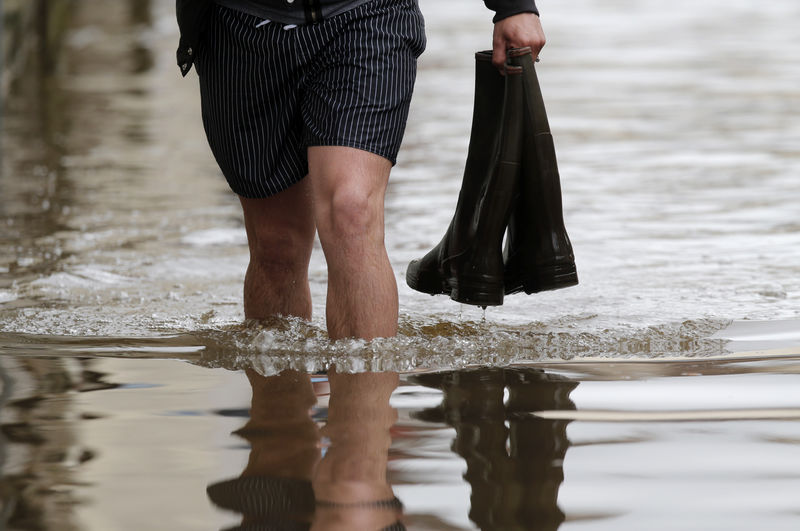By Harry Pearl
SYDNEY, April 2 (Reuters) - A third body has been found in the aftermath of Cyclone Debbie and accompanying floods that swamped Australia's east coast, as receding waters start revealing the human and economic cost of the storm.
The disaster zone stretched 1,000 km (600 miles) from Queensland state's tropical resort islands and Gold Coast tourist strip to the farmlands of New South Wales state.
The body of 77-year-old Nelson Raebel was found in floodwaters in the state of Queensland on Saturday afternoon, Queensland Police said, bringing the national death toll to three since the cyclone hit on Tuesday.
Authorities are still searching for another three people that remain missing in flood-hit areas of Queensland.
Evacuation orders are still in place for a number townships in northern New South Wales, but authorities said on Sunday the flood threat was receding.
"There are still a number of communities subject to evacuation orders and in some instance people have remained in their properties and that's causing us the biggest challenge at the moment," Mark Morrow of the NSW State Emergency Service told Channel 9.
Several large rivers that had reached major flood levels were falling, the Australian Bureau of Meteorology said on Sunday. But the city of Rockhampton in Queensland state is bracing for record-level flooding next week.
Cyclone Debbie, a category four storm, one short of the most powerful level five, pounded Queensland state on Tuesday, smashing tourist resorts, bringing down power lines and shutting down coal mines. Defence Force was deployed to help deliver medical personnel and supplies to communities in the north of the state.
Debbie will hit Australia's A$1.7 trillion ($1.3 trillion) economy, with economists estimating it will slow growth to under 2 percent in the first quarter. taken by emergency services in the town of Lismore, in New South Wales, show businesses in the town centre inundated with brown water.
The Insurance Council of Australia has declared the event a catastrophe.
